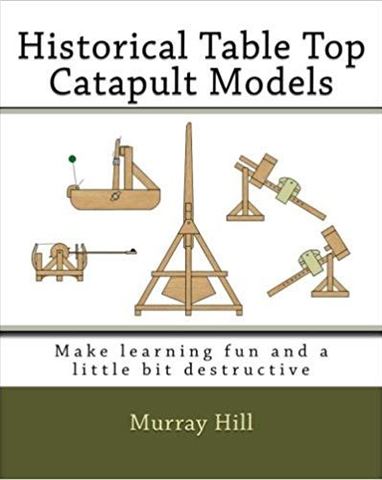This book is about historical tabletop catapults, so if you have acquired this book assuming it was about Ricky the Magic Pixie. well, you are in for a disappointment. However, since I showed the foresight to actually name the book Historical Table Top Catapult Models, we can assume we are on the same page as far as it goes. So, yay.
And yet, that title may well mean something different for you than it does for me anyway. Since I'm the history teacher, not to mention the guy that's writing this book I'd best tell you what my understanding is. There is actually a point to this. I have been through it myself and then spent years explaining to people that they are not just not entirely correct, they are wrong. Not as wrong as buying a book you assume is about a magical pixie and discovering it is actually about catapults. Nonetheless, you may need to do a little adjusting.
So this set of five models is going to take you through a bit of the history and hopefully teach you a bit about the development of catapults and venture into how things got off course. Firstly we can start with the language of throwing machines. Catapult is from Greek and has come to mean any kind of throwing machine. The machines themselves are broken into three categories of what drives them. Torsion, tension and traction.
Tension means the natural flexibility of a material, like the wood in a bow. The very first "catapult" was the gastraphetes, invented in Syracuse in 399BC and basically, a conventional oversized bow put on its side and a stock added. The development from this was the first crewed weapons being really big bows mounted on a fixed frame and spanned with a winch. So realistically a really big crossbow. Tension is covered by the inclusion of the da Vinci catapult.
Torsion was the primary driving power of all ancient machines, comprised of twisted sinew ropes. The system may well have been developed from the twisted rope spine of the Greek warships, but whatever the inspiration the man credited with the development was Phillip II of Macedon. He was also responsible for a few other things, such as the Macedonian Phalanx and Alexander the Great.
The system was used to power machines from the small handheld manuballista, to the huge stone-throwing siege catapults of the Greeks and Romans. It was an exceedingly powerful driving system as well as being versatile and underwent a number of developments and modifications which are covered by the first three models.
Traction means a system that used gravity or something pulling as the powering system. This is best demonstrated by the largest of the models, the trebuchet. It was this machine that played a key part is military strategy during the Middle Ages due to its ability to smash pretty much any fortification in existence.

Available from Amazon